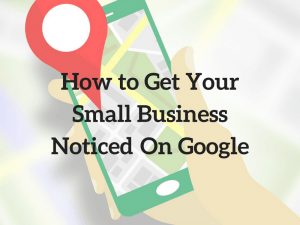 Nowadays, the internet is considered the go-to place for promoting one’s product and services, yet not every business owner is active at that or even doing it properly. Think you are one of them? Then you are on the right page because, in the next few minutes, I’ll be showing how to get your small business noticed online and ranked, with just a few simple techniques.
Nowadays, the internet is considered the go-to place for promoting one’s product and services, yet not every business owner is active at that or even doing it properly. Think you are one of them? Then you are on the right page because, in the next few minutes, I’ll be showing how to get your small business noticed online and ranked, with just a few simple techniques.
Are you excited to learn this? Great! Let’s go.
1) Get a Business Website
When it comes to a business website, I am referring to an online asset that you owned and have control over. Hence, a Facebook page (you don’t own Facebook) or a single web page (usually comes with limited features) doesn’t really count.
What you actually need is a custom domain (one that is similar to your business name) and if you can get an SSL certificate along with that, it would be extremely beneficial when you plan to set up an online store later. So, let’s say the name of your business is Brook’s Coffee Shop, an ideal domain should read like this;
https://brookscoffeeshop.com (HTTP, without the ‘s’, indicates a non-SSL site)
As for publishing a website, I highly recommend using WordPress because it’s versatile and supports more marketing features regardless of the business size. At SiteRubix, you can purchase a custom domain for as low as $13.99/year and connect immediately to a WordPress site without any technical hassle.
If you are interested, learn more about their WordPress hosting services here.
2) Get a Mobile Responsive Theme
A responsive design allows a website to provide an optimal viewing experience across different mobile devices and this usually depends on what theme you are using. If you already have a preexisting site, you can check the responsiveness through Google’s Mobile-Friendly Test tool.
If you aren’t using a responsive theme, then it’s time to switch to one because you’re missing out on a lot of business opportunities online. These stats will prove my point;
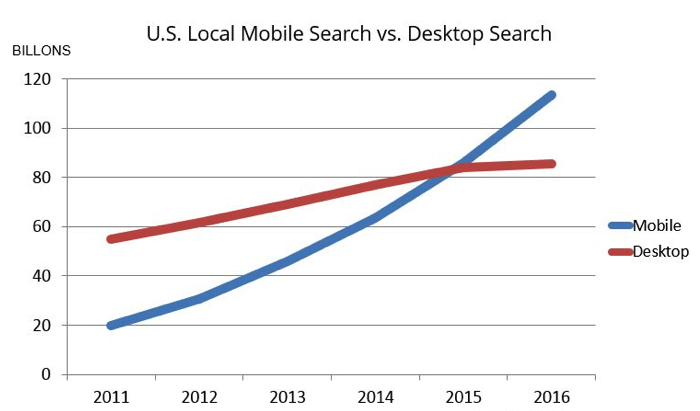
- Local mobile searches have now exceeded desktop searches in the US.
- 40% of users turned to the competitor’s site after a bad mobile experience.
- 67% of users are more likely to buy a product or service when a business site is mobile friendly.
Most WordPress themes are now mobile responsive so there’s no need to learn any web coding to enable this feature on your site. You can always experiment with different designs before deciding on which one to use.
3) Create a Business Logo
A company logo is a crucial business branding and you want to make sure that the visual element is easy for the customers to relate to and convenient to be printed on both soft and hard copies like business cards or T-shirts. On a website, there are a few prominent places to optimize a logo for online presence.
1. The first is on the homepage and after uploading the image into the media file, make sure to name the logo using your business name AND location inside the Alt Text space. For example, you could type Awesome Burgers (business name), San Diego, CA (location).
2. The second thing is to upload the favicon, which is essentially a small size logo that appears on the tab browser. On the WordPress editor, go to Appearance > Customize > Site Identity (name may differ according to themes) > Site Icon and you should be able to select the desired image according to the recommended guideline.
![]()
4) Use Target Keywords in Homepage Title and Description
A targeted keyword basically phrases with a specific location that you want to rank for your business. For example, if you are a seafood restaurant owner in San Diego, you could type this – seafood restaurant in San Diego – on Google search and see what are the other suggested phrases.
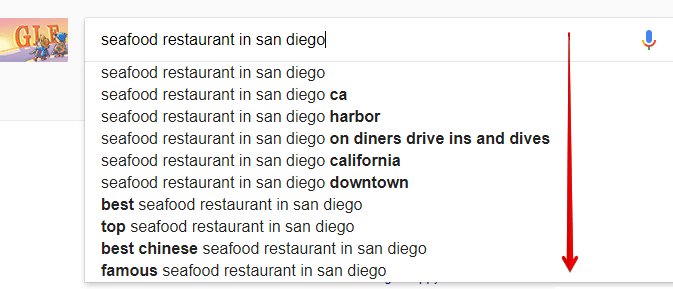
Let’s pick the ‘best seafood restaurant in San Diego CA’ and analyze the phrase using Jaaxy, my favorite keyword tool. In this process, we want to find out the level of competitiveness and see if this keyword can help to rank your business on the search engine or not.
Here’s what we found out;

According to the analysis, this phrase gets about 80 searches per month (see the AVG value) and only 4 websites (refer to the QSR value) are ranked. That means the competition is extremely low (the closer the QSR value is to zero, the better) which makes it an ideal targeted keyword to be used for your business.
Meanwhile, a homepage is basically a static page that people will see when they visit your website. On the homepage settings, you should have the business name, location, phone number and targeted keywords (where applicable) in two places – the Meta Title and Meta Description.

This information will prompt Google about the nature of your business and the area that you serve. Besides that, it’s also important to have the business name, address and phone number (aka as NAP) on the footers of all pages (such as About Us, Services, Menus and etc.)
Somewhere on the Contact Page, you can embed a Google Map to show people where your business is located. To do this, open Google Maps, type in the business name or address, click on Share > Embed Map. There should be a coded link that you can copy and paste on the WordPress HTML editor to publish the map.
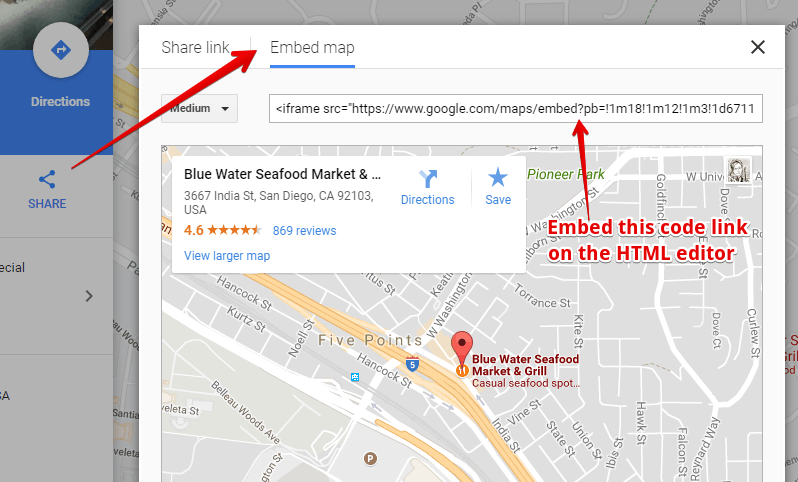
Pretty awesome, right?
5) Set Up Google My Business
Google My Business (GMB) is one of the most commonly viewed business listings and it helps people to discover your brand when they search within a locality. It’s extremely efficient in showing your business information, images as well as customer reviews – all in one page. An optimized GMB listing always has a link to the official website where viewers can read more about your products/services.
You can learn more about listing your business on Google for free through this guide.
6) Create Business Listings on Local Directories
The purpose for creating listings on online directories is to get as many sources as possible to cite your business information, primarily the NAP. All these web mentions will prove to the search engines that your organization is legitimate and help to generate more customers reviews related to your business activities.
If you have been in business for a while, there’s a good chance that someone has already made a reference to your brand. In such cases, just go into the directories and claim those listings. Otherwise, you can create your own by registering through some of the following directories;
- Yelp
- Foursquare
- Yellow Pages
- City Search
- HotFrog
- Angie’s List (for home services businesses)
- TripAdvisor (for travel and accommodation-related businesses)
- Doximity (for healthcare professionals)
- Zillow (for real estate businesses)
- Delivery (for catering businesses)
- Houzz (for home improvement businesses)
7) Create a Facebook Business Page
In the beginning, I briefly mentioned about Facebook Pages and they are actually best used to create social engagement between businesses and their client base. Due to the similarity in creating a personal profile, it’s no wonder that most owners tend to create a business page first before a website when the effect could be better off the other way round.
In case you don’t know where to start, search through the left panel of your Facebook profile and look for ‘Page’. The setup process should be very straightforward from thereon.
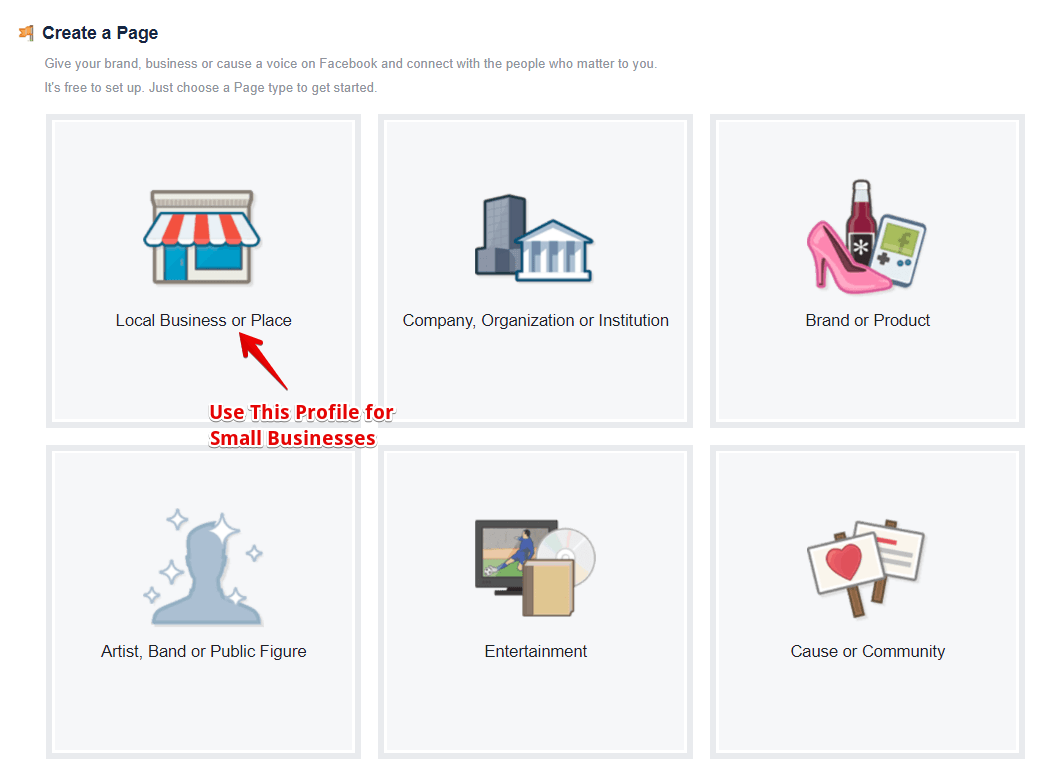
8) Start a Blog about Your Business
Last but not least, consider writing a blog for your business to feature your products or services once in a while. This will send signals to the search engines to check out your site and rank your business for various keywords. Not many people are doing this enough, yet blogging is considered one of the most cost-effective marketing strategy (coupled with social media) that any small to medium businesses can apply.
Think about how your business can help consumers solve their daily problems and focus your discussion around those topics. For example, if you own a tea shop, you can write about the benefits of drinking tea, show people how to brew cold tea or even share recipes to go along with your unique tea selections. Such information sharing can actually make your brand more personal than bigger competitors.
The techniques for finding these topic ideas are the same as the homepage settings that I mentioned earlier. Use Google search to brainstorm for some targeted phrases, perform a research analysis and select the most relevant and least competitive keywords as the foundation of the articles.
When you publish frequently and share across various social channels, it will contribute to more free traffic coming to your site. In the business sense, that’s equivalent to more customers and more sales.
Don’t Wait, Start Now
Do you know what’s exciting about all these tips that I’ve just shared? You can execute them entirely on your own without much technical skill or costly professional fees. Take some time to set things up, tweak a little bit here and there and before you know it, Google could be sending some customers to your business.
If you still want to learn more about how to get your small business noticed online, please check out this webinar at the Wealthy Affiliate business training platform. Register for free and watch immediately. If you need any help, just ask okay? Hope to talk to you soon. 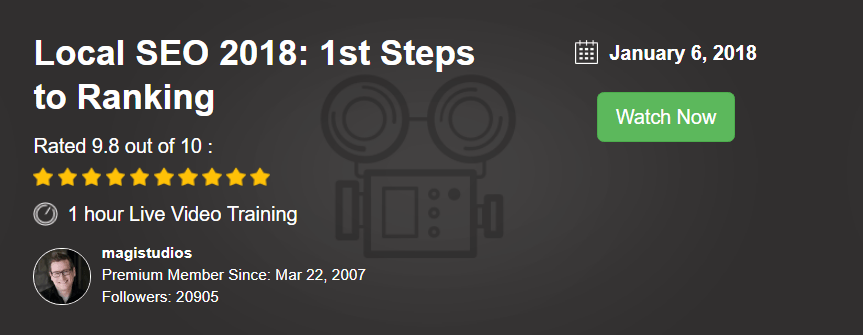

Hi Cathy,
Thanks for this practical guide. I know that having an online presence is important for growing a retail business – I just don’t know how to execute them. Glad I learned a few important tips from here.
Hi SJ, glad to be of help to you! 🙂
Hello Cathy,
I love the enthusiasm that you have from the beginning to the end. I also appreciate all the information that you provide along with the examples as well. I think the the example of creating a business logo (brand) really stood out to me the most, because not too many people explain what site icons are and why it is important to use them.
Thank you for providing me with all this information as well as showing me where I can receive additional help.
Hi Emonne,
Site icon (or Favicon) is still an obscure topic for many small businesses, but I just want to show that there are different ways to incorporate one’s brand on a website. I am glad you learned something from this.
Hi Cathy, really cool post and a lot of useful information. I have a small business myself and I just claimed my online presence. I think it is super important for any business owner to have a website and social media accounts nowadays. You can be so much more targeted with them than you ever could. With the web, it’s like the old fashion way of word to mouth – on steroids.
Cathy, I found it very helpful that you have highlighted many important factors to be taken into consideration when developing a local business website. There seems like a lot of things to do – even some that I am not aware of. Are you saying that without the correct implementation, it will be harder for the search engines to discover your site?
Yup, that’s exactly my point. You’d be surprised by the number of local business websites that aren’t optimized for the search engines. Most of the time, they are built on simple website builders or cheap hosting plans that offer limited features. They usually have a couple of pages, not mobile friendly and come with a lot of broken links due to the lack of maintenance. I truly feel that more can be done for these sites, especially if one already have a strong business presence in the community.
Hey Cathy, what a useful guide. It’s surprising how many business owners still haven’t ‘claimed’ their online presence either through a domain or through Google maps. But I guess that leaves a huge opportunity for us SEO’s to come in and help them out.
Have you had any experience reaching out to local business owners or thinking about starting a side business doing that?
Hi Wilson. Branching out to small business marketing is a very exciting career prospect. I am currently helping my brother’s company with that and the result is tremendous. Definitely a side business I would consider in the near future.